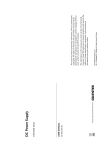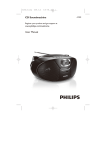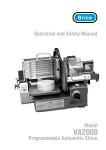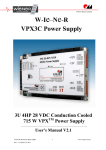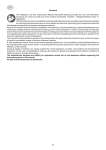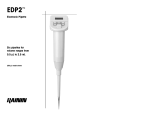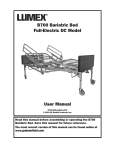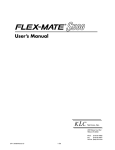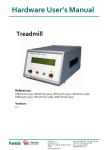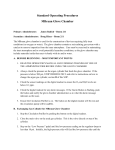Download Loading Dock User`s Manual Installation, Operations
Transcript
Loading Dock User’s Manual Installation, Operations, Maintenance and Parts Serial No.: Shipping Date: Capacity: Model No. Power Pack: Motor Voltage: Controls: Special Notes: Do not install, operate or service this product unless you have Read and understand the Safety Practices, Warnings, and Installation and Operating Instructions contained in this User’s manual. Failure to do so could result in death or serious injury. 50021004-2 1 OF 22 Table of Contents Loading Dock User’s Manual ......................................................................................... 1 Table of Contents ....................................................................................................... 2 SAFETY ALERTS (Required reading!) ........................................................................... 3 SAFETY PRACTICES ..................................................................................................... 4 RESPONSIBILITIES OF OWNERS/USERS ........................................................................ 5 Deflection ............................................................................................................... 5 Inspection and Maintenance ...................................................................................... 5 Removal from Service .............................................................................................. 5 Repairs ................................................................................................................... 5 Operators ............................................................................................................... 5 Modifications or Alterations ....................................................................................... 5 INSTALLATION INSTRUCTIONS..................................................................................... 6 MAINTENANCE CHECK LIST - To be made by authorized personnel ................................... 6 SAFETY LABEL LOCATION ............................................................................................ 7 LABEL ITEM NUMBERS: ............................................................................................... 8 SAFETY LABELS .......................................................................................................... 9 OPERATIONS............................................................................................................. 10 Introduction ........................................................................................................... 10 Loading ................................................................................................................. 10 Operation .............................................................................................................. 10 MAINTENANCE DEVICE INSTRUCTIONS ........................................................................ 11 Maintenance Safety Strut ......................................................................................... 11 Mechanical Scissor Blocks ........................................................................................ 12 Adjustment Procedure for Limit Switch (if applicable) .................................................. 13 TROUBLE SHOOTING POWER PACK ELECTRIC/HYDRAULIC .............................................. 14 TROUBLE SHOOTING POWER PACK AIR/HYDRAULIC ...................................................... 15 HYDRAULIC CYLINDER OVERHAUL ............................................................................... 16 Procedure For Removal Of Cylinder(S) ....................................................................... 16 Installation Of New Or Repaired Cylinder(S) ............................................................... 16 PREVENTIVE MAINTENANCE ........................................................................................ 17 MECHANICAL PARTS .................................................................................................. 18 PARTS #................................................................................................................... 19 HYDRAULIC HOSE LAYOUT.......................................................................................... 20 MANUAL LOWERING VALVE......................................................................................... 21 LIMITED WARRANTY................................................................................................... 22 14021004-0 Page 2 of 22 SAFETY ALERTS (Required reading!) The following SAFETY ALERTS are intended to create awareness of owners, operators and maintenance personnel of the potential safety hazards and the steps that must be taken to avoid accidents. These same alerts are inserted throughout this manual to identify specific hazards that may endanger uninformed personnel. Identification of every conceivable hazardous situation is impossible. Therefore, all personnel have the responsibility to diligently exercise safe practices whenever exposed to this equipment. This is a safety alert symbol. It is used to alert you to potential personal injury hazards. Obey all safety messages that follow this symbol to avoid possible injury or death. Indicates imminently hazardous situation which, if not avoided will result in death or serious injury. Indicates a potentially hazardous situation which, if not avoided, could result in death or serious injury. Indicates a potentially hazardous situation which, if not avoided, may result in minor or moderate injury. Indicates a potentially hazardous situation which, may result in property damage. 14021004-0 Page 3 of 22 SAFETY PRACTICES Never go under the loading dock unless the maintenance device is engaged in accordance with the manufacturer’s instructions. If maintenance or service is required: Only authorized service personnel shall provide maintenance/service on the loading dock. Follow approved lock out procedures. Do not work on or under the lift without properly engaging the lift’s maintenance device, see Maintenance Device Instructions on page 11. The loading dock shall not be modified or altered without the written permission of the original manufacturer. Read these Safety Practices before installing, operating or servicing the loading dock. Failure to follow the safety practices could result in death or serious injury. Do not operate this loading dock unless you have training and authorization. Read, understand and follow these instructions, the hazard labels on the loading dock, and other warnings/instructions contained in this User’s Manual. Prior to using the loading dock: verify that the safety devices supplied with the loading dock (guard rail, restraint chains, toe guards, and warning bells, if so equipped), are in place and functioning properly. Operate the loading dock through one complete lift/lower cycle and verify its proper operation. At the same time inspect loading dock for any visible or obvious damage. If there is any damage, or unusual vibration or noise, remove the lift from service using approved lockout procedures. Notify maintenance personnel immediately. Do not exceed the lift’s capacity as stated on the nameplate and center loads on the lift. Be aware that the lift may have reduced capacity when loads are rolled over the platform‘s sides and ends. If load is mobile, secure load in a fixed position before operating lift. Prior to operating the lift, ensure that all personnel on or near the lift are aware of its imminent operation, and that no person will be in harms ways during the use of the lift. Ensure that objects are clear of the area beneath the platform, and immediately surrounding the perimeter of the lift, while it is in use. Keep area around lift free of oil, objects and debris that could cause slipping or tumbling into or under the lift. Hinged bridge (lip) must overlap truck bed a minimum of 4” (100 mm) before use. Do not use bridge if it is supported solely by its lifting chains. Verify that snap chains in all openings are securely in place during and after each use of the scissor lift. Safety chain hooks are used to securely hold the hinged loading lips in their over center raised position between use. Always return the hinged lips to the storage position secured with safety chain hooks after each use. 14021004-0 Page 4 of 22 RESPONSIBILITIES OF OWNERS/USERS Deflection It is the responsibility of the user/purchaser to advice the manufacture where deflection may be critical to the application. Inspection and Maintenance The lift shall be inspected and maintained in proper working order in accordance with the manufacturer’s operating / maintenance manual and safe operating practices. Only trained personnel and authorized personnel shall be permitted to perform maintenance / service operations on the lift. Maintenance / Service personnel shall have: Read and/or have explained and understood the manufacturer’s operating /maintenance manual, and all safety rules and labels, prior to performing any maintenance/service operations on the equipment. Full time unlimited access to the manufacturer’s operating/maintenance manual. Removal from Service Any lift not in safe operating condition such as, but not limited to excessive leakage, missing rollers, pins or fasteners, any bent or cracked structural members, cut or frayed electric, hydraulic or air lines, damaged or malfunctioning controls or safety devices, etc. shall be removed from service until it is repaired to the original manufacturer’s standards. Repairs All repairs shall be made by qualified personnel in conformance with the manufacturer’s instructions. Operators Only trained personnel and authorized personnel shall be permitted to operate the lift. Before Operation Before using the lift, the operator shall have: Read and or have explained, and understood, the manufacturer’s operating instructions and safety rules Inspect the lift for proper operation and condition. Any suspect item shall be carefully examined and a determination made by a qualified person as to whether it constitutes a hazard. All items not in conformance with the manufacturer’s specification shall be corrected before further use of the lift. During Operation The lift shall only be used in accordance with the manufacturer’s operating/maintenance manual Do not overload the lift. Ensure that all safety devices are operational and in place. Modifications or Alterations Modifications or alterations of industrial loading docks shall be made only with written permission of the original manufacturer. These changes shall be in conformance with all applicable provisions of the standard and shall be as safe as the equipment was before modification. These changes shall also satisfy all safety recommendations of the original equipment manufacturer for the particular application of the lift 14021004-0 Page 5 of 22 To avoid injury stand clear of scissor mechanism/pinch point while in motion. Do not work under lift without maintenance strut in place. See Maintenance DeviceInstructions High voltage to be handled by authorized personnel only. Stay clear of pinch points. Before installing the loading dock read and follow the Safety Practices, on page number 4. Stay clear of moving platform. Loading dock must be anchored to floor. INSTALLATION INSTRUCTIONS Electrical power requirements are to be handled by a certified Electrician to ensure correct hook-up, motor rotation and that all electrical circuitry is working properly. 1. Do not install the lift in a pit unless it has a bevel toe guard or other approved toe protection. A shear point can exist which can cause severe injury to the foot. 2. Lift platforms traveling below floor levels may create openings, and the shape of the load and how the load is arranged on the lift may create a toe hazard as the load passes the top edge of the pit. Both situations may require guarding in accordance with Federal Regulations. Any such guarding must be installed prior to operating the lift. 3. Before unstrapping the lift, place it in the desired location. 4. Unstrap the lift. 5. Take the controls and place them where desired. 6. Secure the loading dock to the floor with anchor bolts thru four (4) holes located at points as marked. If shimming is required under the base frame hinge areas insure it extends the full area. If shimming is required under the area of roller travel, the shim must extend over the full length of travel to avoid bending of the base frame. Shims not included with equipment. 7. Before using the Elevating Dock/Lift Table, all of the Lifting Lugs or Clamping Closures must be removed. The unit is now ready for normal use. Observe all warning and precautions in this manual and on the loading dock stickers. MAINTENANCE CHECK LIST - To be made by authorized personnel Do not work under lift without maintenance strut/blocks in place. Check all hoses and fittings at the base for signs of leaks. Check the anchor bolts to make sure that they are tight, secure and not damaged. See the maintenance section for cam follower lubrication. Check electrical cords and wiring for any fraying or cuts. Check electrical switches and controls for damaged or broken fittings. 14021004-0 Page 6 of 22 SAFETY LABEL LOCATION SIDE VIEW FRONT AND REAR VIEW 5 9 3 3 6 10 4/SIDE 2 6 1 6 4 4 11A 11B 11A 11B 11B 12 12 11A 12 Panel Box NOTE: 14021004-0 It is the owner’s responsibility to ensure that all safety labels are affixed in their original position, and remain legible throughout the life of the loading dock Page 7 of 22 LABEL ITEM NUMBERS: ITEM Q-TY 1 2 2 1 3 8 4 5 6 7 8 9 10 11 12 DESCRIPTION Maximum rated Capacity Label Intended to warn personnel to read operating instructions before operating loading dock and the maximum weight capacity with an evenly distributed load, side and end axle loads. Label/Serial Number Plate Safety Stripping Label Intended to caution personnel the loading dock may be in operation and to stand clear 6 Scissor Leg Safety & Avoid Bodily Injury Label Intended to warn personnel to read operating instructions before using the loading dock, to warn of possible bodily injury hazard 1 Stand Clear While in Motion Label Intended to warn personnel to stand clear while the loading dock is in operation 8 Pinch Point Label Intended to warn personnel of pinch point hazard causing bodily injury 1 High Voltage Label Intended to warn personnel of high voltage hazard 1 Arc Flash & Shock Label Intended to warn personnel of both electrical shock and arc flash hazards 4 Do Not Operate Without Rails Label Intended to warn personnel against using loading dock without the guard rails and chains being in place that were supplied with the lift 1 Bolted Close for Shipping Label Intended to notify installer the loading dock is bolted down for shipping and to avoid damaging the table bolts must be removed before operating Maintenance Device 11A-2 Intended to warn personnel not to use before reading instructions in manual for proper usage 11B-3 Strut displayed as 11A, Block used for 3 sided pit 11B Not to support lift when loaded 3 Do Not Work Under Lift Intended to warn personnel to have the maintenance device in place before going under lift 14021004-0 PART NO 921-194S LOCATION One each long side platform edge One only long side of platform edge All sides of platform edge 6003451A One each side of platform and one each side of scissor legs 6007075A One only side of push button control 6007121A One on each corner of platform 6007122A One on electrical panel box One on electrical panel box ART 1275A 6007120A One on each side of long platform and one each side top rail One on top of platform 921-234A 6007074A 11A Strut one on strut and one on base 11B Block two on base frame and on one each block One on base adjacent to maintenance device and 2 on long side of base Page 8 of 22 SAFETY LABELS 14021004-0 Page 9 of 22 OPERATIONS READ CAREFULLY BEFORE USING Before operating the loading dock read and follows the Safety Practices on page 4. Always be certain the vehicle wheels are chocked and the parking brakes are set before loading or unloading. Hinged bridge (Lip) must overlap vehicle bed a minimum of 4” (100 MM) before use. DO NOT USE BRIDGE IF IT IS SUPPORTED SOLELY BY ITS Lifting CHAINS. Introduction The elevating loading dock features a deck of reinforced checker plate or smooth plate. The scissor arms are of ample section with chromed hinge pins running in bushings at the stationary ends and cam followers or hardened rollers at the rolling ends. Torque tubes connecting the scissor arms into pairs carry the mounting points for the lifting cylinders. Bearing or bushings are provided at all major wear points. The hydraulic system consists of a power pack comprising a direct-coupled motor and fully-submerged pump with suction strainer, oil reservoir, solenoid-operated lowering valve, check valve, relief valve, compensated flow control valve, manual lowering valve (on all units except the 1Hp and 3Hp single phase) and one or more hydraulic cylinders with a flow control valve. All necessary hoses and electrical equipment are provided including a two-button control switch operating on 120 volt circuit. Loading Although, the unit will accept an unbalanced loading, every effort should be made to load the deck in a uniform, balanced manner for safe, trouble-free operation. When handrails and safety chains are provided, these should be used at all times across the "open" ends of the deck. Hinged loading lips are fitted at the factory and greatly ease the operation of larger docks. Safety chain hooks are used to securely hold the hinged loading lips in their over center raised position between use. Always return the hinged lips to the storage position secured with safety chain hooks after each use. Operation To raise the elevating loading dock, the "up" button is depressed on the control switch. This starts the motor (via the starter on the power pack) and pump, sending hydraulic oil from the reservoir into the cylinder(s). As the oil forces the cylinder rods to extend, the deck will rise until the button is released at the desired elevation. Upon releasing the button, the motor and pump stop and a check valve maintains the deck at that level. Pressing the "down" button on the control switch actuates the solenoid-operated lowering valve only, allowing the hydraulic oil to return to the reservoir along the pressure line and by-pass the pump. The deck will continue to descend until all the oil is exhausted from the cylinder and the stops on the base prevent further movement. The downward motion can be halted at any point by releasing the "down" button. This returns the lowering valve to its closed position. 14021004-0 Page 10 of 22 Before servicing the loading dock, read and follow the Safety Practices on page 4 and the Operations section of this manual, on page 10 MAINTENANCE DEVICE INSTRUCTIONS Maintenance Safety Strut To ensure safe working conditions for personnel while performing maintenance and when using a maintenance strut, follow the procedure as outlined below: 1. Elevate the deck/platform to maximum upper travel. 2. Place by hand one end of the maintenance strut in the designated area in the base at the hinge end of the scissor assembly. Do not expose your person to the under-table area! 3. Slowly lower the deck, holding the strut vertically and guide the strut into its designated area of contact on the deck. Deck should stop when the strut is engaged. Ensure proper engagement both top and bottom before proceeding. 4. Perform a "Lock Out" procedure on the unit's power pack to ensure that the loading dock cannot be raised prematurely or in error while maintenance is still being performed. 5. Proceed with the maintenance desired. 6. To bring the loading dock back into service and remove the maintenance strut, have all personnel stand clear of the loading dock. 7. Bring the power pack back on line. 8. While holding the strut from outside the perimeter of the deck/base area, elevate the deck until the strut can be removed. 9. Step away from the loading dock before proceeding to test proper function of the loading dock. 14021004-0 Page 11 of 22 Mechanical Scissor Blocks To ensure safe working conditions for personnel while performing maintenance and when using mechanical scissor blocks, note the procedure outlined below: 1. Elevate the deck/platform to maximum upper travel. This will provide the necessary clearance at the roller end of the scissor assembly for block insertion. 2. Place by hand each block in the base at the roller end of the scissor assembly. Placement of the blocks should be such that the roller/scissor leg is contacted squarely and in line with the axis of the base. Do not expose your person to the under-table area! 3. Slowly lower the deck, observing that, as the scissors close, the blocks are pushed along the roller track. The near end of the blocks should contact the base end member squarely and simultaneously. Deck should stop when the blocks contact the member. Ensure proper engagement on each side before proceeding with any maintenance. 4. Perform a "Lock Out" procedure on the unit's power pack to ensure that the loading dock cannot be raised prematurely or in error while maintenance is still being performed. 5. Proceed with the maintenance desired. 6. To bring the loading dock back into service and remove the mechanical blocks, have all personnel stand clear of the loading dock. 7. Bring the power pack back on line. 8. Elevate the deck to maximum and free the blocks. 9. With care, remove the blocks from the roller track area. 10. Step away from the loading dock before proceeding to test proper function of the loading dock. 14021004-0 Page 12 of 22 Adjustment Procedure for Limit Switch (if applicable) Up travel limit switch (located at the hinged side set at requested travel) can be adjusted to set proper height by adjusting the “Elevator Bolt”. To increase raise height, loosen nut by turning it counter-clockwise then turn Elevator bolt clockwise (Note: 1 clockwise turn gives approximately 1” of travel). Once the required height is reached, tighten nut by turning it clockwise. To decrease raise height, loosen nut by turning it counter-clockwise then turn Elevator bolt counter-clockwise. Once the required height is reached, tighten nut by turning it clockwise. Hinged Side Elevator bolt Up travel limit switch Note: Limit switch may vary. 14021004-0 Page 13 of 22 Before servicing the loading dock, read and follow the Safety Practices on page 4 and the Operations section of this manual, on page 10. TROUBLE SHOOTING POWER PACK ELECTRIC/HYDRAULIC Problem - Table does not lift: Possible Solutions If motor does not operate - check fuse and overload reset - check for loose wall plug, etc. If loading dock does not lift - check oil level - check solenoid - check pump by removing hydraulic hose from outlet. If oil spurts out of fitting when the pump is operated, then check to see if proper pressure is developed by connecting a pressure gauge. If the pressure is too low - either the pump is worn out - the solenoid valve is leaking - the solenoid valve is stuck open or the relief valve is sticking. Problem - Table does not maintain steady height - check for leakage of hydraulic fluid at hydraulic fittings power pack and hydraulic cylinders. - raise the loading dock by holding down the 'up' button, while raising the loading dock; jog the 'down' button by pressing and releasing it many times - solenoid valve may be sticking, lower the loading dock to the collapsed position, remove and if possible blow it clean with an air gun and re-install - lower the loading dock to the collapsed position remove the check valve and inspect for dirt if possible blow it clean with an air gun Problem - Table locked in the "Up" position - Lowering velocity of the loading dock could be too high, which locks the velocity fuse. To unlock the loading dock, unlock set screw on flow control valve. Close flow control valve completely. Push the up button on control to pressurize the cylinder(s). Then press and hold the down button on the control station and open the flow control valve very slowly. When loading dock begins to come down at desired speed, lock flow control set screw on the knob. Note: Down speed cannot be too fast or velocity will lock again. If up limit switch is included in up circuit, call factory to describe solution. - Check the operation of the Peripheral Safety Stop, Electrical Circuit (if equipped). When the Down Button is depressed, the solenoid should operate. If the Peripheral Toe Guards do not operate, then the problem could be a bent bar or a sticking trip bar switch. If the loading dock is installed into a pit, there is a possibility that the Peripheral Safety Stops (if equipped) are hung up on snow, ice or debris, which has accumulated in the pit. 14021004-0 Page 14 of 22 Before servicing the loading dock, read and follow the Safety Practices on page 4 and the Operations section of this manual, on page 11 TROUBLE SHOOTING POWER PACK AIR/HYDRAULIC AIR POWERED UNITS ONLY Problem - Table does not lift: If motor does not operate Possible solutions. - check for sufficient Air Supply (is air line lubricated and filtered?) - check Air Line for any leaks If loading dock does not lift - check oil level - check cartridge release assembly (is it sticking?) - check pump by removing hydraulic hose from outlet. If oil spurts out of fitting when the pump is operated, then check to see if proper pressure is developed by connecting a pressure gauge. If the pressure is too low - either the pump is worn out - the cartridge release valve is stuck open or the check valve is sticking. Problem - Table does not maintain steady height - check for leakage of hydraulic fluid at hydraulic fittings power pack and hydraulic cylinders. - raise the loading dock by holding down the 'up' button. While raising the loading dock jog the 'down' button by pressing and releasing it many times - cartridge release valve may be sticking, lower the loading dock to the collapsed position, remove and if possible blow it clean with an air gun and re-install - lower the loading dock to the collapsed position remove the check valve and inspect for dirt, if possible blow it clean with an air gun Problem - Table locked in the "Up" position Lowering velocity of the loading dock could be too high, which locks the safety valve. To unlock the loading dock, first pressurize the system using the power pack. Secondly, close the Flow Control valve, which is located at the hose end (power pack). Once you have re-pressurized the cylinders press the 'down' and begin opening the Flow Control slowly. 14021004-0 Page 15 of 22 HYDRAULIC CYLINDER OVERHAUL The cylinder seals generally have a long life. However, due to an adverse or an extremely dusty environment, premature failure of the seals can occur. This problem will always be evident by leakage of oil out of the cylinders or oil in the breather line (if equipped). Note: Opening the cylinder to check or replace the seals requires special tools. Most hydraulic technicians and service centers do not have these tools. The manufacturer of the cylinders has the necessary tools to service the cylinders. If you encounter cylinder(s) that are leaking, consult factory. Procedure For Removal Of Cylinder(S) Do not work under lift without maintenance strut in place. 1.) 2) 3) 4) 5) 6) 7) Prepare for some leakage/spillage of oil when removing cylinder(s) Have the necessary containers and or absorbing materials to capture hydraulic fluid and avoid environment contamination. Raise the loading dock to the highest point Block both sides of the scissor assembly or insert maintenance strut. See the Mechanical Parts Diagram and follow the Maintenance Device Instructions on page 11. Insert the end of a crow bar between the ram angle and the piston rod pivot. Force the piston rod back into the cylinder casing while depressing down button. This will allow most of the oil back to the tank. Disconnect the hydraulic line and breather line (if equipped) from cylinder port. Make sure you plug the end of hose line(s). Remove pin from cylinder bracket. This will allow the cylinder to be removed from the scissor mechanism. The cylinder can be returned for repair. Installation Of New Or Repaired Cylinder(S) 1) 2) 3) 4.) Make certain that all parts are clean. Insert pin back into the bracket. Remove plugs from hydraulic lines and or breather line (if equipped). Reconnect the hydraulic line and or breather line (if equipped). THE LOADING DOCK IS IN THE HIGHEST UP POSITION AND PROPERLY BLOCKED 5) 6) 7) Reconnect electricity to the power unit. With the loading dock still blocked in the up position push the up button allowing the rod to extend. Do this in short intervals to control the positioning of the rod. Make sure the rod pivot is captured in the ram angle. Once pressure is off of the maintenance block or strut, they can be removed. Power the loading dock up and down several times to eliminate air from the hydraulic lines 14021004-0 Page 16 of 22 PREVENTIVE MAINTENANCE It is recommended that regular preventative maintenance and repairs be carried out by service representatives employed by SAFEBILT or its dealer. In the case where a skilled mechanic(s) is available to the owner to perform these duties it is imperative that they be familiar with the equipment and the code requirements, if in doubt contact SAFEBILT or its dealer, so as not to present a danger to themselves or others. To avoid personal injury, NEVER go under the lift platform or perform any maintenance on the lift until the load is removed and the scissors mechanism is securely blocked in the open position. See “Maintenance Device Instructions” on page 11 Oil Change oil once a year or when it materially darkens, feels gritty or has presence of water (oil will turn milky in color) Temperature above 32º F. (0º C.). - use Shell Tellus 32 or equivalent. Temperature below 32º F. (0º C.). - use Shell Tellus S2 V 32 Low Thermo Oil. The used fluids should be disposed of according to your local environmental codes. Filter Remove and clean strainer each time you replace the oil, more frequently depending on dust conditions in the area Oil Level When the loading dock is in the lowered position, a) if equipped with a sight gauge, the level should register on the gauge, to maximum line – not above. b) Tanks without sight level gauge – the oil level should be 1 inch below the top of tank. Monthly Inspection a) Check all hydraulic circuit for any visible leaks. Repair or replace faulty components. b) Check any unusual noise when it occurs determine the source and correct as necessary. c) Check the snap rings, rollers and all pivot points. If not in place and/or secure replace or repair immediately. d) Check all rollers for sign of wear. Replace as necessary. e) Visually inspect the unit for possible damage caused by abuse or misuse. f) Inspect that all hazard labels are in place and legible. Replace if required. g) Check electrical panel and all wiring for any loose connections or wear of material. Use a proper certified electrician for any repairs required. Lubrication Lubrication of cam followers (if equipped) should be performed on a regular maintenance schedule. Lubrication of pivot points is not required. All pivot points are equipped with selflubricating bushings or sealed bearings. For loading docks fitted with spherical bearings at various pivot points, special lubrication considerations should be followed with respect to load, frequency and speed. Maintenance departments must monitor bearing performance regularly and determine adequate lubrication frequency. Incorporate bearing lubrication into the maintenance program of the loading dock, or the minimum on a weekly basis. Pit The pit should be kept clean of debris and fluids. Under no circumstances shall safety devices be by-passed in order to keep the unit operational 14021004-0 Page 17 of 22 MECHANICAL PARTS 13 12 1 6 7 8 7 8 10 11 9 3 14 5 15 Equipment supplied with either a Maintanence Strut or a set of Maintanence Blocks depending on size and installation. 4 1 2 16 14021004-0 16 16 If shimming is required under the base frame hinge area insure that it extends the full area. If shimming is required under the area of roller travel, the shim must extend over the full length of travel to avoid bending of the base frame.SHIMS NOT SUPPLIED WITH LIFT Page 18 of 22 PARTS # 14021004-0 Page 19 of 22 HYDRAULIC HOSE LAYOUT 14021004-0 Page 20 of 22 MANUAL LOWERING VALVE 14021004-0 Page 21 of 22 LIMITED WARRANTY All SAFEBILT products carry a Warranty against defective parts and faulty workmanship for a period of one year commencing at the time of shipment from our Plant. All replacement parts will be F.O.B. Our Plant and will be issued on return of defective parts. All purchased items such as Hydraulic Pumps, Motors and other components will carry the Warranty of the Original Manufacturer. This Warranty shall not cover failure or defective operation in excess of the recommended capacities, misuse, negligence, accident, alteration or repair not authorized by the company. "No other Warranty exists except as stated herein" SAFEBILT’s obligation under this Warranty is limited to the replacement of defective components at the factory, or, at the discretion of SAFEBILT, at a location designated by the Company. SAFEBILT will not be liable for any Loss, Injury or Damage to persons or Property, nor for Damages of any kind resulting from Failure or Defective operation of any Materials or equipment furnished there under. 14021004-0 Page 22 of 22
























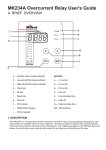


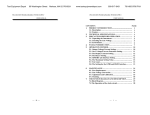
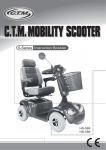
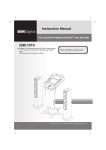
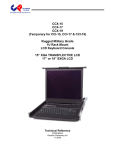
![588-589-00a [Converted]](http://vs1.manualzilla.com/store/data/005638396_1-02d08bb06dde3fa2099be559e669b8e9-150x150.png)
